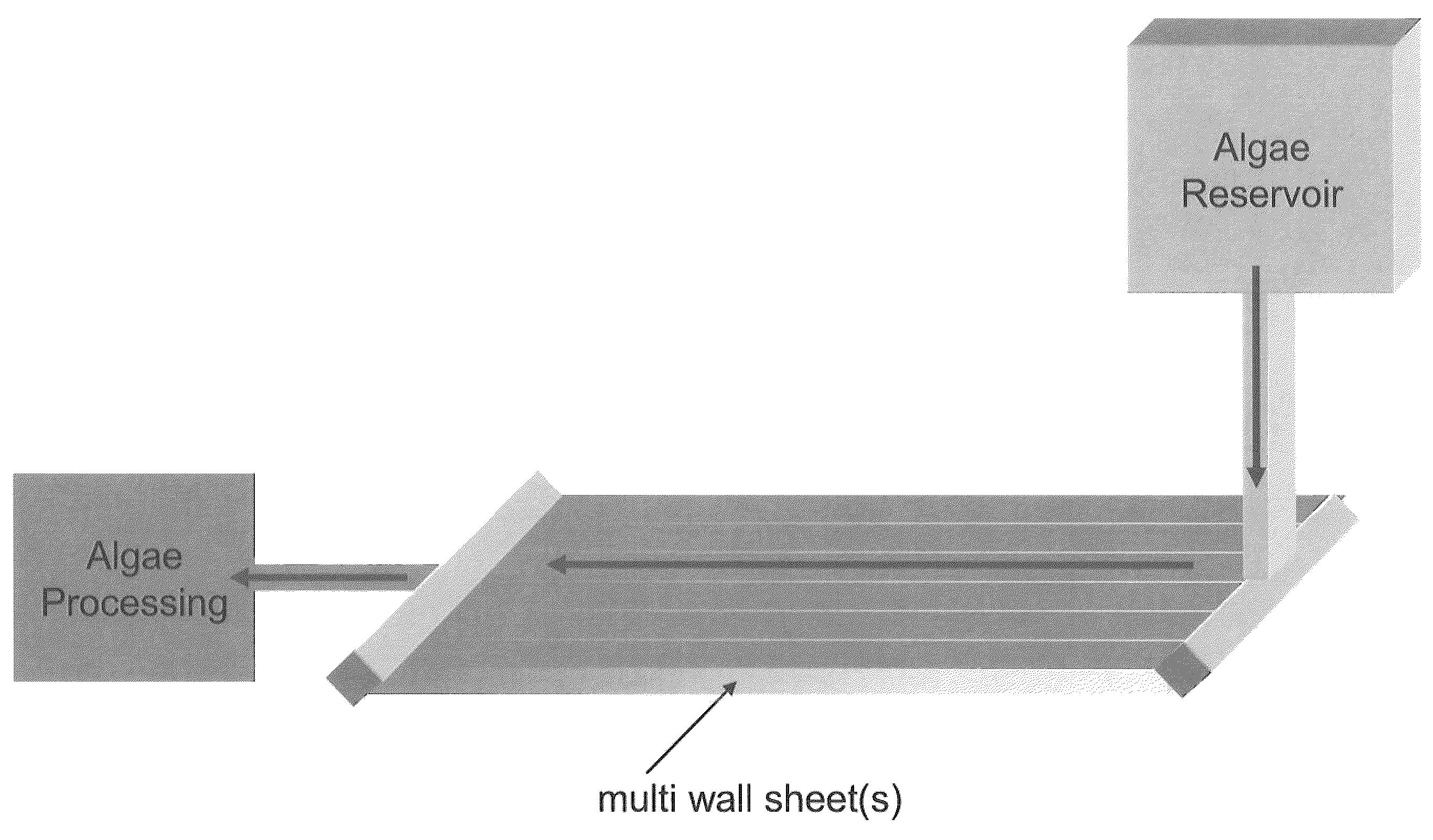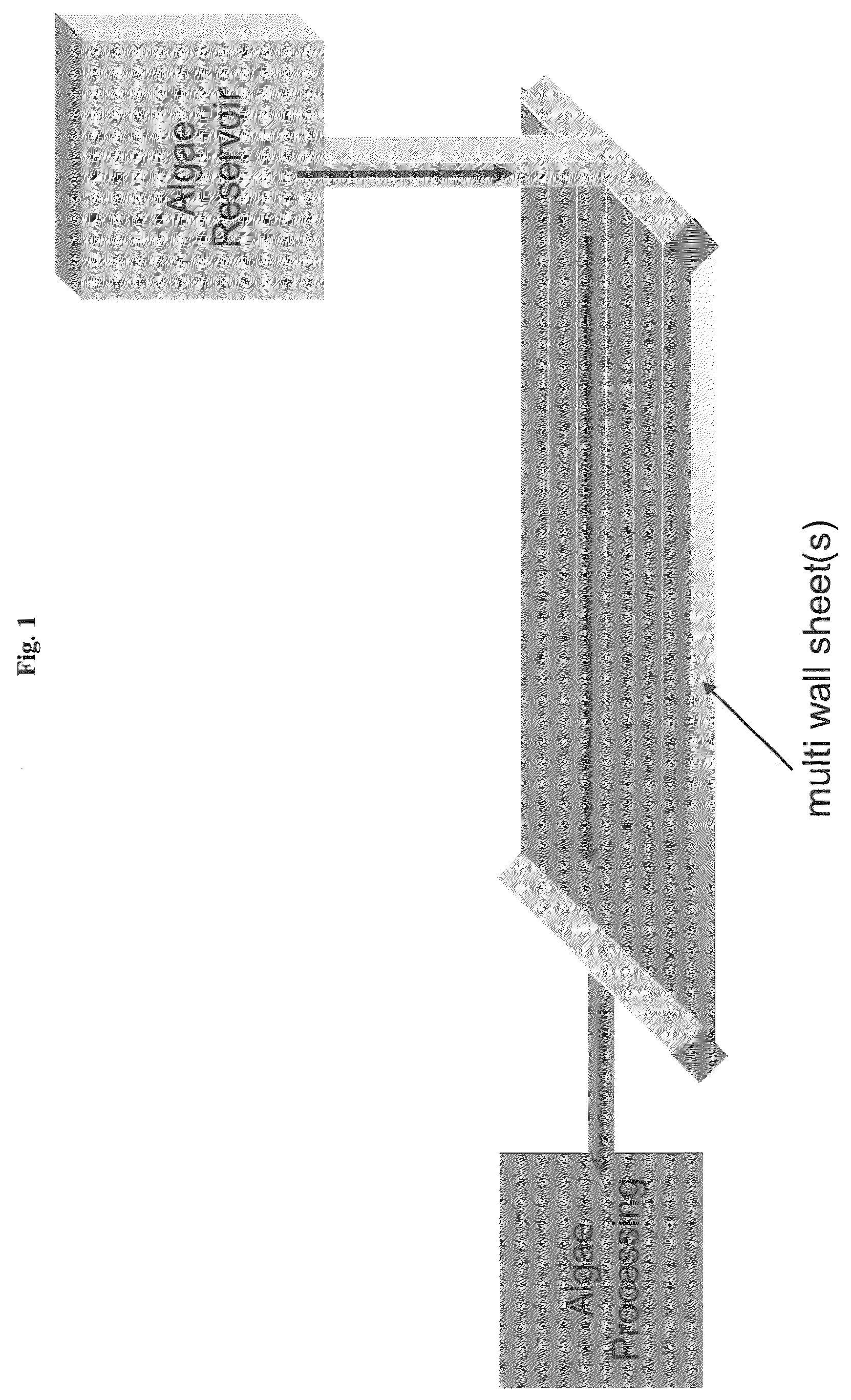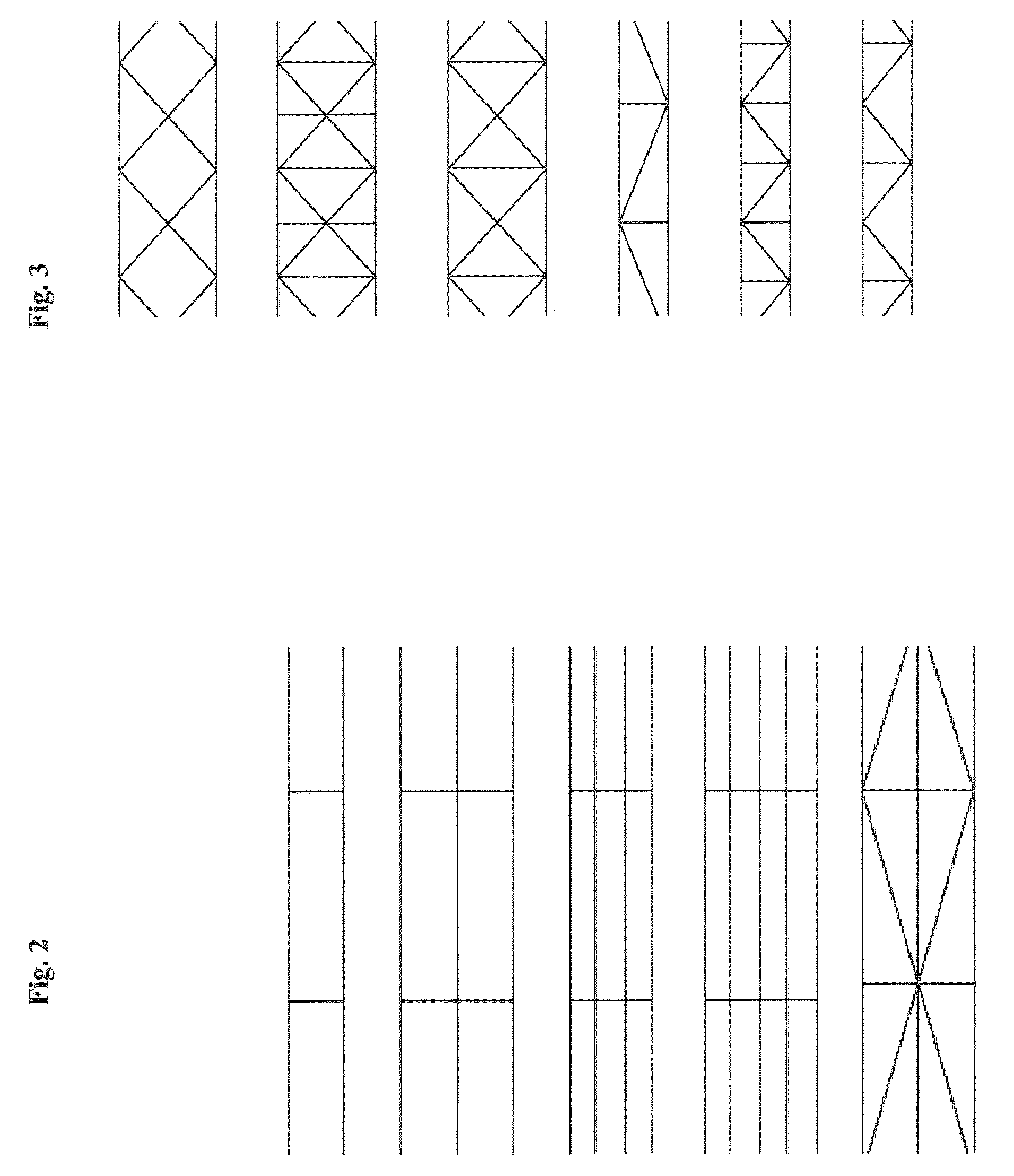Photobioreactor for algae growth
a photobioreactor and algae technology, applied in the field of microbe growth, can solve the problems of difficult temperature control, low yield, and inability to use genetically engineered microorganisms, and achieve the effects of less expensive construction, high yield, and easy maintenan
- Summary
- Abstract
- Description
- Claims
- Application Information
AI Technical Summary
Benefits of technology
Problems solved by technology
Method used
Image
Examples
Embodiment Construction
[0030]The present invention will now be described for purposes of illustration and not limitation. Except in the operating examples, or where otherwise indicated, all numbers expressing quantities, percentages, and so forth in the specification are to be understood as being modified in all instances by the term “about.”
[0031]The present invention provides a flow-through photobioreactor containing at least one thermoplastic multi-wall sheet having an upper layer and a lower layer having arranged there between at least two sidewalls, at least one inner wall and two or more end caps.
[0032]The present invention further provides a process for the production of a biofuel involving flowing an algae solution into a flow-through photobioreactor containing at least one thermoplastic multi-wall sheet having an upper layer and a lower layer and having arranged there between at least two sidewalls, at least one inner wall and two or more end caps, exposing the algae solution to sunlight, harvest...
PUM
| Property | Measurement | Unit |
|---|---|---|
| thickness | aaaaa | aaaaa |
| thickness | aaaaa | aaaaa |
| thickness | aaaaa | aaaaa |
Abstract
Description
Claims
Application Information
 Login to View More
Login to View More - R&D
- Intellectual Property
- Life Sciences
- Materials
- Tech Scout
- Unparalleled Data Quality
- Higher Quality Content
- 60% Fewer Hallucinations
Browse by: Latest US Patents, China's latest patents, Technical Efficacy Thesaurus, Application Domain, Technology Topic, Popular Technical Reports.
© 2025 PatSnap. All rights reserved.Legal|Privacy policy|Modern Slavery Act Transparency Statement|Sitemap|About US| Contact US: help@patsnap.com



